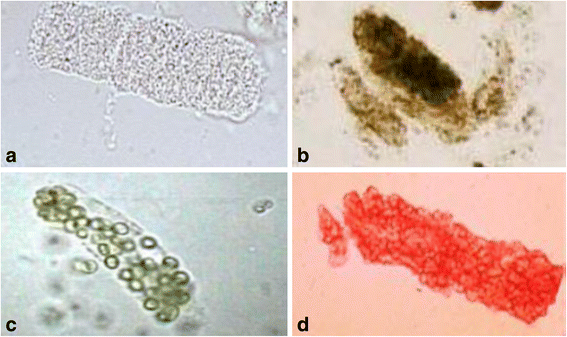Practical approach to detection and management of acute kidney injury in critically ill patient
- PMID: 28932401
- PMCID: PMC5603084
- DOI: 10.1186/s40560-017-0251-y
Practical approach to detection and management of acute kidney injury in critically ill patient
Abstract
Background: Acute kidney injury (AKI) is a common complication in critically ill patients and is associated with high morbidity and mortality. This paper provides a critical review of the etiologies of AKI and a systematic approach toward its diagnosis and management with emphasis on fluid volume assessment and the use of urine biochemical profile and microscopy in identifying the nature and the site of kidney injury.
Materials and methods: The search of PubMed and selection of papers had employed observational designs or randomized control trials relevant to AKI.
Results: AKI is defined by the rate of rise of serum creatinine and a decline in urine output. The pathophysiology is diverse and requires a careful and systematic assessment of predisposing factors and localization of site of injury. The majority of AKIs are due to prerenal causes such as fluid volume deficit, sepsis, or renal as in acute tubular injury. The use of central venous and arterial blood pressure monitoring and inferior vena cava echocardiography complemented by urine analysis and microscopy allows assessment of fluid volume status and AKI etiology.
Conclusions: Timely intervention by avoidance of fluid volume deficit and nephrotoxic agents and blood pressure support can reduce the incidence of AKI in critically ill patients.
Keywords: Acute kidney injury; Critical illness; Fluid volume assessment; Urine microscopy.
Conflict of interest statement
Ethics approval and consent to participate
Not applicable
Consent for publication
Not applicable
Competing interests
The author declares no competing interests.
Publisher’s Note
Springer Nature remains neutral with regard to jurisdictional claims in published maps and institutional affiliations.
Figures

Similar articles
-
Urine abnormalities in acute kidney injury and sepsis.Contrib Nephrol. 2010;165:274-283. doi: 10.1159/000313767. Epub 2010 Apr 20. Contrib Nephrol. 2010. PMID: 20427978
-
Management of Acute Kidney Injury: Core Curriculum 2018.Am J Kidney Dis. 2018 Jul;72(1):136-148. doi: 10.1053/j.ajkd.2017.11.021. Epub 2018 Feb 22. Am J Kidney Dis. 2018. PMID: 29478864 Review.
-
Incidence, timing and outcome of AKI in critically ill patients varies with the definition used and the addition of urine output criteria.BMC Nephrol. 2017 Feb 20;18(1):70. doi: 10.1186/s12882-017-0487-8. BMC Nephrol. 2017. PMID: 28219327 Free PMC article. Review.
-
Update on Perioperative Acute Kidney Injury.Anesth Analg. 2018 Nov;127(5):1236-1245. doi: 10.1213/ANE.0000000000003741. Anesth Analg. 2018. PMID: 30138176 Review.
-
Acute kidney injury and continuous renal replacement therapy in children; what pediatricians need to know.Korean J Pediatr. 2018 Nov;61(11):339-347. doi: 10.3345/kjp.2018.06996. Epub 2018 Oct 23. Korean J Pediatr. 2018. PMID: 30360040 Free PMC article.
Cited by
-
Urinary metabolites predict mortality or need for renal replacement therapy after combat injury.Crit Care. 2021 Mar 23;25(1):119. doi: 10.1186/s13054-021-03544-2. Crit Care. 2021. PMID: 33757577 Free PMC article.
-
Survival and recovery modeling of acute kidney injury in critically ill adults.SAGE Open Med. 2022 May 26;10:20503121221099359. doi: 10.1177/20503121221099359. eCollection 2022. SAGE Open Med. 2022. PMID: 35652035 Free PMC article.
-
Anemia during SARS-CoV-2 infection is associated with rehospitalization after viral clearance.iScience. 2021 Jul 23;24(7):102780. doi: 10.1016/j.isci.2021.102780. Epub 2021 Jun 24. iScience. 2021. PMID: 34189429 Free PMC article.
-
Assessment of acute kidney injury risk using a machine-learning guided generalized structural equation model: a cohort study.BMC Nephrol. 2021 Feb 22;22(1):63. doi: 10.1186/s12882-021-02238-9. BMC Nephrol. 2021. PMID: 33618695 Free PMC article.
-
Machine Learning to Assist in Managing Acute Kidney Injury in General Wards: Multicenter Retrospective Study.J Med Internet Res. 2025 Mar 18;27:e66568. doi: 10.2196/66568. J Med Internet Res. 2025. PMID: 40101226 Free PMC article.
References
-
- Brivet FG, Kleinknecht DJ, Loirat P, Landais PJ. Acute renal failure in intensive care units—causes, outcome, and prognostic factors of hospital mortality; a prospective, multicenter study. French Study Group on Acute Renal Failure. Crit Care Med. 1996;24:192–198. doi: 10.1097/00003246-199602000-00003. - DOI - PubMed
Publication types
LinkOut - more resources
Full Text Sources
Other Literature Sources

